Ethnic style in a modern interior. Theory and practice.
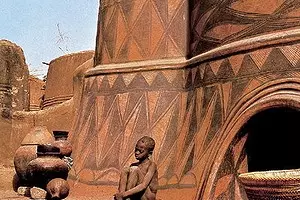
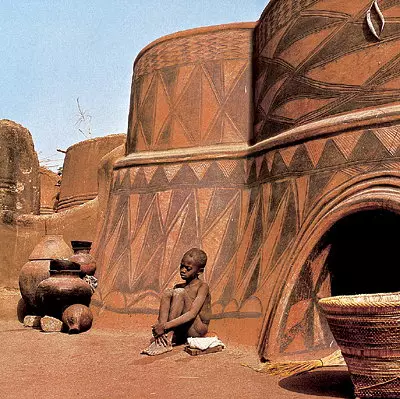
Farm in the north of Ghana (Sirigi Nationality)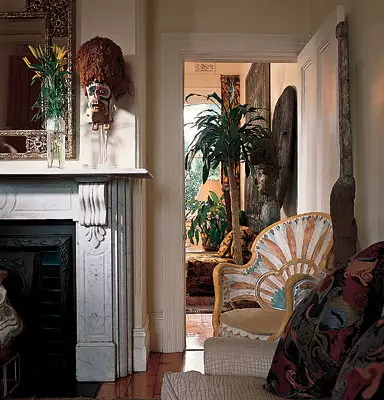
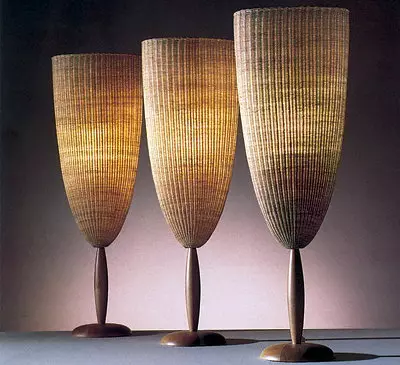
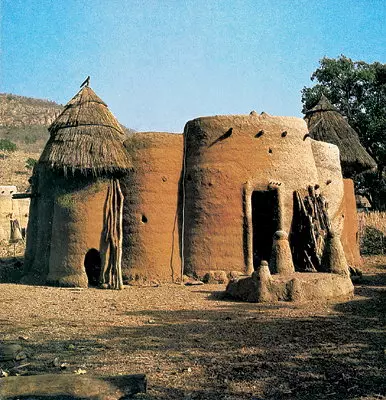
Special House for the Oblast of Initiation (Nationality Sombie), Africa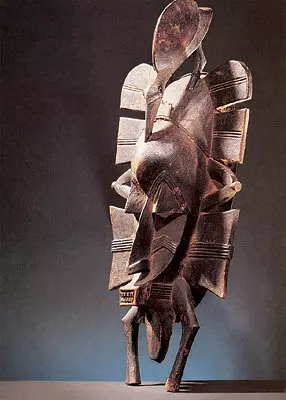
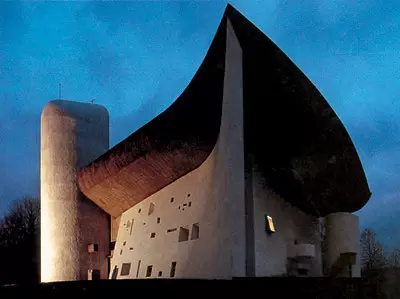
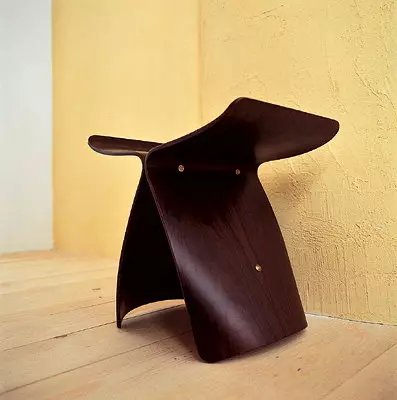
"Trone leader" - plastic translation from African is quite unequivocal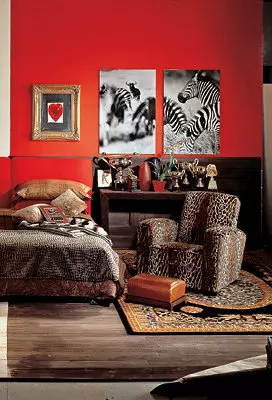
Photos Zebra- Organic Interior Design Detail in Exotic style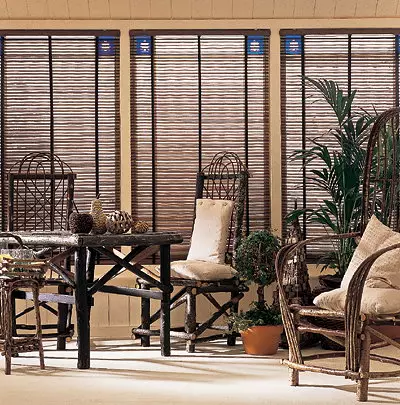
These chairs and the table are as if made by savages, never seen European furniture
On the pages of magazines dedicated to design, the interiors of various directions can be found. There are currently decorated in a trendy ethnic style. It is distinguished by exotic masks and fetishes, fabrics with an ornament resembling petroglyphs, furniture with upholstery under the leopard, calabas on the shelves, zebras skins on the floor and other wonder things. Isv and what is this style? Why is he so popular? And is it possible to call it style in the strict sense of the word?
Making a small excursion to the history of the arts, we remember that only one is considered a full-fledged style that is widely manifested in different areas of life and in all kinds of visual and building art painting, sculpture, architecture, in applied art, making interior items, clothing design. Such large styles have become, as you know, antique classic, romance style, gothic, baroque, classicism, modern, etc. They developed gradually, more or less consistently replacing each other. For a long time, tastes were transformed, and with them architectural and artistic forms. The result was needed in smaller style categories. They are customary to call directions. The subject of our current discussion is also, rather, a stylistic direction, which does not even have a well-established name. It is called primitive, ethnic, folk, exotic, colonial. But in any case, the classic properties of a large style is not endowed.
To begin with, let's try to figure out a little with the title. Let's just say: the word ethnic is suitable for him. Indeed, in every style, anyway, national traits are manifested, and almost any of them are formed inside some ethnos, or the people (for example, Chinese, Japanese, Russian styles, etc.). The concept of folklore (abbreviated folk) is often confused with country (rustic) or use these words as synonyms. Well, they really stand pretty close. The word primitive is borrowed from art historians (see "primitive art") and in relation to the design of interiors, it is rather a negative color (as, however, and colonial; it is consumed more often than others). One way or another, at our disposal one name left: Exotic. Perhaps we will use it further.
Involuntarily suggests the question: is it worth the stylistic direction of discussion, if it still has no established name? They will answer like this: there would be a phenomenon, and the term for him will take care of it.
Becoming popular thanks to convenience, efficiency and simplicity, this style simultaneously encompasses something hidden, dorming at the bottom of the soul of each. So tired of overloads, information and stress consciousness to strive for "real" to knocham, to the origins outside of social and cultural realities. So we are just looking at the fire in the evening twilight, likeing their ancient ancestor. Modern psychologists call this person's property atavism consciousness - inexplicable, age-old blood memory. We remember themselves when they were not yet people in the present social sense of the word. Probably, all this can be explained by the success of the exotic direction. By the way, today the second coming of the style is already observed. Actually was the first?
The process of mass colonization of the peoples of Africa, Asia and Latin America approached its completion at the end of the XIXstoley. At about the same time, a large number of works of folk art were taken out of tropical countries. WTO time they were interested only by ethnographers and integer parties setdled on the dusty regiments of museums. European art developed by their own way: Modern was drunk by Japanese engravings and Chinese porcelain. But the passion for their refinement gradually weakened.
The visual art of the beginning of the XXVEK has become a field of large experiments. The artists turned their eyes to the very basics of art, laid out with genuine "primitives", - Kfetisham Cannibals, to the masks of the savages. The visor of the artistic revolution that has reached its climax before the First World War, the passion for the African sculpture united the masters of various schools and directions. Ritual Negro masks were sold then in antique shops on the cheap and soon replaced in the workshops of the casts from Apollo Belvedere. It can be understood that he attracted a generation in them, which was looking for the exit from the impasse of the Western tradition. The creation of unreserved artisans possessed the qualities that western art lighted on their diligent route: powerful expression, clarity of the structure, nudity of performing techniques and generalized form conciseness.
An unconscious Creative Act has become the main principle of artists by I. Balovarova, M.Larionov, K. Malevich, who united in the 1912 year in the Oslin Tail Community. Calling themselves "intuivists" masters of the brush were looking for themselves in themselves, proclaiming the value of primitive art.
To begged that the "primitive" artist does not write off the real face from nature, but builds it from the existing set of elements. According to the example of Hogen and, perhaps, Matissey for the art of primitives turned Pablo Picasso. It is not difficult to guess that he is made of the design method from the specified elements, which was fundamentally different from the method of styling visual impressions. The purpose of the artist becomes not imitation of appearance, but creating a design. So, the icon "Avignon girls", in essence, nothing but a successful attempt to translate the "applied to European". The same African plastic was transferred to a modern, initially alien material-canvas, butter.
Total searches were touched by not only painting and sculpture, but, naturally, the architecture. As a reaction to the pragmatic rationalism of the industrial century, in the 1930s there is a "organic architecture" of the American F. Lita, who set up the task of developing a natural landscape. Probably, the study of the primitive stage of man's life and brought representatives of the "organic architecture" to make a natural element element, blocks, waterfalls into the interior.
In his lecture, read in Sorbonne back in 1924, Leccussier said: "The house has a direct generation of anthropocentrism. In other words, everything leads back to the person ... Snail's sink. Therefore, it is necessary for it to be made on our measure." Late later records dated 1949 products, you can read: "The savage hut has all the advantages of a typical structure. It is the only one for certain conditions. The nomad tent is also a typical structure." Staying faithful to his contradictory talent, the master refused to be strictly geometric principles propagandized by him earlier, and in 1950-1953 built a Capell Notre Dame in Ronshan. This is the first structure that meets its new ideas about plastic form, the organic landscape, material and functions. The roof, raised above the volume of the building, relies only by several points and seems soaring in the air. The solution of three towers fully complies with the concept of the complex as a whole. The famous chapel in Ronshane, more similar to prehistoric megalith, has become the best work of Lecumbusier.
Appears in different European and American cities of house-cliffs, houses-mengirors, built using the support and bale principle, open during the Paleolithic period, are based on natural, primitive plastic. It is unclear whether the excursions of P. Pikasso, A.Modiliani, Lecumbusier in the primitive-African depth of the solid soil are considered. However, those born as a result of the masterpiece enriched European culture, defending prospects for the future and presenting the past in a fundamentally new perspective. Making many turns on the spiral of development, humanity returned to its origins.
Plastic
Often using the word "plastic", we do not always think about its meaning. Let's try to figure out. If you place the African mask on the same table, the Japanese Nethake, a Russian nesting and a statuette, made on the German porcelain factory, one can see that there are not very comfortable for these subjects. They seek to disperse and exist at a certain distance from each other. The fact is that the space inside and around them is formed on completely different principles, not always compatible. The iafrikan mask, and the netreoshka are made of wood. But the spring, the primitive power of plastics is very different from the streamlined looseness of the second.Thus, it can be concluded that plastic is the principle of formation of volume. This principle is valid for applied art, and for interior decor, and for architecture.
Compare the rattled upheld gothic, viscous, fluid modern and concise, bleeding High-Tech metal. The basis of differences is still the same: the forming of the principle of plastic. Plastikos in Greek means "suitable to the modeling", or to form formation. ARMOR, in turn, is able to exist only in space. The concept of plastic applies to the decor, however, in this case it can be interpreted as stylistic integrity in one object. For example, the rocket interior is naturally whimping, playful plastic stucco decor, completely inappropriate in gothic or minimalism.
However, back to our primitive-African style. It so happened that it was on the African continent that the life and ways of peoples and peoples were preserved in a pristine state. Keep in mind, all or almost all that you can buy in domestic antique shops and gear galleries of ethnic art is the so-called "crafts" - modern copies of traditional products of folk craftsmen. And among the originals taken as a basis, genuine antiquities are a bit, - as a rule, they are not more than 150-200 years. Tropical climate, combination of heat and humidity, termites do not spare anything, especially wood. In addition, made in the ritual purpose of the mask or fetish after using "to date" were to be destroyed, that is, simply burned or treated. A lot of real works of the African and Polynesian folk art were destroyed by Christian missionaries. Whatever it is paradoxically, the most ancient objects are preserved in European Museums of ethnography and private collections.
The African sculpture is not exhausted by one masks, there are excellent small plastic strings of people and animals from wood, copper, bronze and ivory. Modern African masters, following the market, learned not only to copy old samples, but also to create amazing styling of precious black wood. Recall that this breed of wood can be recognized by weight: it is noticeably heavier than others and sinks in water, besides very hard and difficult in processing.
Workshop
Using the direction of exotic in the design of the house is attractive in its economy. Even on a small area of the city apartment, you can create a stylish interior. Depending on your desire, lifestyle and financial opportunities, determine the level of style introduction into your home. Full reconstruction is likely to be unavailable. It is impossible to completely recreate the global hunning hunter's hut. Punching of real funds remains scenery and stylist accent. Iso, believe me, quite a few.
Exotic style space has two plastic development options. In love, a wildlife is translated into the interior, but in one embodiment it has to be geometrical into linear contours (painting, graphics on the walls), in families, and inxual volumes, simple and clear. The planning is preferred free, usually oriented around the central living room in the "Organized Disorder". Zoning is carried out using a multi-level floor, mobile partitions, wicker shirms and curtains. The finishing of surfaces may be the most concise, simply white walls. But it is better to use any textured coating, imitating natural material and resembling a slightly cracked clay or stone. The floor can be postponed with ceramic tiles under a stone or clamping sisal mats. Kmeste will be homemade streams and waterfalls flowing through artificial stone boulders. How to arrange such an oasis, our magazine told in №1 for 2001.
In the decor, use "ethnic" ceramics, as much as possible to real African. If there is no, you can apply the known and rather easy to accept any suitable vessel with a thick rope of coarse natural fiber. The number of exotic masks and figurines choose to your own taste, but do not turn the apartment in the museum. Very active in its plastic African sculpture in large quantities begins to act in oppressing. Do not forget, because these are objects of religious cult, and who knows what astral energy they are taking. Artistic museums are now offering a fairly wide selection of modern copies of museum exhibits, so that the Paleolithic Venus is at all optionally to go to the archaeological expedition.
The palette in our case is very restrained and limited to natural colors. It can be all shades of ocher (golden brown, pale yellow, terracotta) and umbra (greenish brown, dark brown, olive). Artists call such paints "lands", since various clay breeds are still used for their manufacture, containing a lot of natural pigment. Around the times of clay is simply triturated with lard, and as a black dye used soot. It is better to use water-dispersion or acrylic paints.
Furniture is relevant simple, laconic forms, no varnishing, paint and gilding. Woven wicker items from rattan or bamboo will look. It is organically fit into the interior and things from simply, even roughly treated tree, as if cracked from time.
Special regimen- Lighting. It is better to make a laundry, creating mysterious, twilight flicker. Sources of light should be non-selected, camouflaged. For lampshades, you can use fabrics with a graphic "primitive" ornament or "wild" colors that simulate animal skins.
Russian-Designer Phrasebook
Beam (it. Balken-timber) - support element, usually horizontal, prismatic shape, based on the rescue support. The beam can be wooden, stone, reinforced concrete. Located in a series of beams form beam or flat overlap. Supports are the walls or racks (pillars, columns).
Bungalow (English. Bungalow) - a tent made of leather, a view of the toll housing adopted by American Indians. Such structures are found in African Aboriginal, Asia, Oceania. Stylization under Indian huts (light country buildings with an open veranda) in modern American architecture are also called bungalows. The concept of "bungalow" in the modern meaning in the 50s contributed to the architecture of F. Lit, determining it as part of the "organic architecture".
"Organic Architecture" - Direction in the architecture of the XXVEK, spreading in the United States and Western Europe in the 30s-50s. The main doctrine, developed by F. Lit, argued that the building was the likeness of a living organism, the development of which is determined by the needs of people and environmental properties. Wright believed that the most important building was the location of the premises, and not the facade. If the internal layout of the house is good and convenient, it will probably be beautiful and outside. "O. A." He opposed dry pragmatism, characteristic of constructivism. The organic connection of the building with the environment, the introduction of the construction in the landscape and the landscape in the construction, inside which the islands of living nature, rocks, streams, streams, waterfalls, trees were confirmed, - confirmed the basic idea of the continuity of the landscape outside and inside the building.
Megalith (gr. Megas-large, Lithos stone) - a construction of a cult nature of roughly treated or untreated stone blocks. There are three types of megaliths: dolmens, mengirs and croms. The appearance of megalithic structures is dated to the end of neolithic (20-23 thousand years old Don.E.).
Dolmen (Fr. Dolmen from the Breton Tol- table, MEN- Stone) - a complex megalithic structure in the form of a single-chamber room composed of two or several stone vertical blocks, overlapped with a horizontal plate (the weight of the coating tiles-from40 to 300t). In many cases, Dolmen was used for burial. Distributed in Europe, Asia, Africa, mainly in the seaside regions. Belong to bronze, sometimes to the iron century.
Cromlech (Breton Crom-Circle, Lech-stone) - Megalithic structure of cult destination. It is a circle or several concentric circles composed of huge (6-7 m height), vertically standing blocks, sometimes blocked by stone blocks. Such objects are found in different areas of old and new light. The most famous croms of England (Stonehenge) and Brittany (Karnak).
Mengira - oblong stones, single or forming long alleys (up to several kilometers). Height of stones - from1 to 20m and more. Sometimes covered with relief. Most common in Western Europe. Apparently, associated with the cult of the dead.
Petroglyph (gr. Petros- stone, Glyphe- thread) - image, knocked, scratched or carved on separate stones, cliff surfaces, walls of caves.
Celebration - the basic principle of architecture. The construction consists of beams resting on two or several vertical rack supports. The beams form overlapping, structural parts of buildings, separating rooms on floors (with light or vaulted ceilings). An example of a primitive female-beam design- Dolmen.
Tectonics (gr. Tektonike) - composition, ratio of carriers and irregular parts, expressed in plastic forms. Tectonics manifests itself in proportions, rhythm, interpretation of elements.
"Traditional art" - Art that exists at the lowest stages of development in all peoples and maintains close continuity in all major aspects (functions, species, genres, images, etc.). His distinctive features: non-professional and extraimedic nature of creativity, saturation of mythological symbolism, inseparable communication with the whole religious complex.
Fetish - Natural or specially manufactured item that is attributed to supernatural power capable of providing people with various services. Such properties can endure rocks, trees, sinks, etc., as well as various household items, such as pots, Calebas, drums. Among the sculptural products is most often small anthropomorphic or zoomorphic figurines. Fetish can be intended, for example, to protect the field and housing.
Calebas - Vessel made of extended and dried pumpkin.
